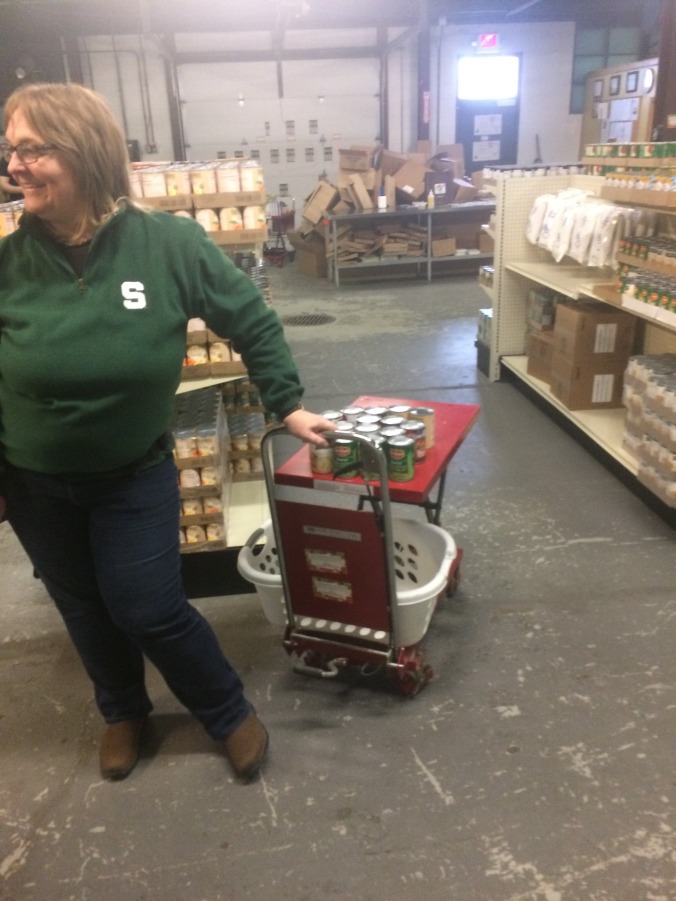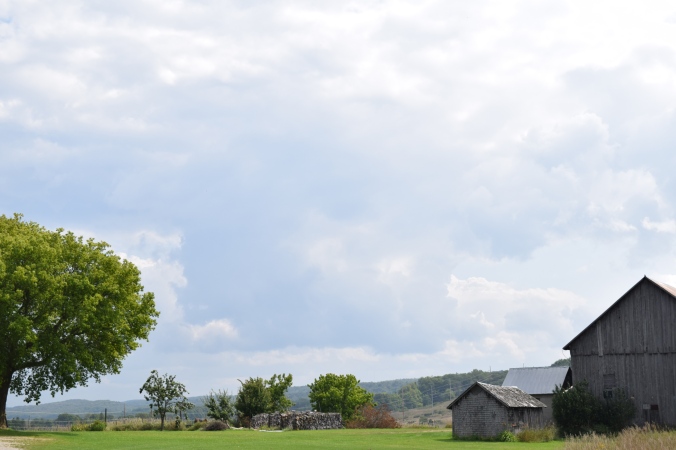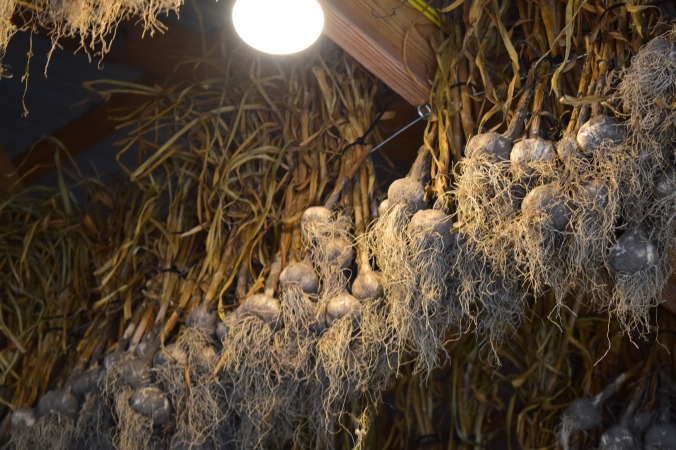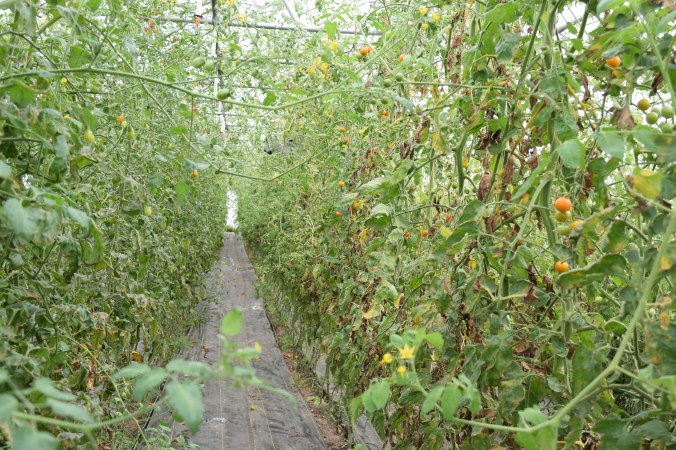With events surrounding COVID-19 rapidly evolving, the Food and Farming Network has decided to postpone our March 18th Food & Farming Summit until a later date. We look forward to assembling with you and resuming this important work. We invite you all to take this opportunity to focus on the health and well-being of those closest to you, the resiliency of our local food system, and how intimately they are connected to each other. Stay Safe!
Author: nwmiffn
Food and Farming Network Summit March 2020 POSTPONED
With events surrounding COVID-19 rapidly evolving, the Food and Farming Network has decided to postpone our March 18th Food & Farming Summit until a later date. We look forward to assembling with you and resuming this important work. We invite you all to take this opportunity to focus on the health and well-being of those closest to you, the resiliency of our local food system, and how intimately they are connected to each other. Stay Safe!
The May Farm: Harvesting Sunlight
By Sharron May
It seems fitting to write a blog post about a solar grant project against the backdrop of spring’s lengthening days. The plants, animals, and humans on the farm are harvesting every extra minute of daylight, faces tilted toward the sun.
Our interest in solar energy was ignited by the 70’s “back to the land” movement and reading Foxfire books. Decades later it was re-ignited by the 90’s “regenerative farming” movement and reading books by Michael Pollan, Joel Salatin, and Wendell Berry. Thus, the mission for The May Farm is trustworthy food raised close to your table. We wanted to produce nutrient-dense food, processed and sold locally using minimal inputs and fossil fuels. Our ‘pilot pasture’ aims to provide a low-tech template for beginning farmers whose biggest obstacles are a shortage of land, capital and/or expertise.
The first solar infrastructure item we purchased was the unit that charges the electric fence on our 30-acre pasture. But you could say that the pasture itself was the very first investment. It’s a great big horizontal solar panel that harvests sunlight and with a little help, turns it into beef, lamb, and chicken. As the mixed herd is rotated daily in succession around the pasture they seem oblivious to the fact that they’re regenerating the land, preserving the watershed and removing atmospheric carbon. It’s all in a day’s grazing.
When the Cherry Republic grant application letter arrived, a quote from CBS Solar was still warm in our hands. We had just concluded that we could only afford a small system; one that would only generate up to 40% of the capacity we needed. When we opened the letter from Cherry Republic we couldn’t believe our eyes, and shortly thereafter, our good fortune. The grant award gave us the financial nudge we needed to invest in the larger system with the potential to supply up to 80% of the energy needed to run the farmstead. Through April’s rain, sleet, and unprecedented snow, the system was up and running without a hitch.
Cherry Republic’s willingness to invest in farms like ours empowered us to expand our solar infrastructure and stimulate our local economy by hiring a local solar manufacturer. This spring there’s another backdrop on the farm. As the days continue to lengthen, plants, animals, humans and 28 solar panels are harvesting every extra minute of daylight, faces tilted towards the sun.

Hillside Homestead: Putting the Environment First
By Connor Drexler FFN VISTA, Lizzy Freed MAEAP Technician
Susan Odom of Hillside Homestead has many concerns while managing her authentic farm stay in the rolling cherry hills of Leelanau county. First, that her guests receive the best experience of a century ago: antique furniture, a huge cast-iron stove fed firewood to push away the morning cold, and gourmet food served like the home cooking you imagine your great-grandmother gave to the hungry mouths of your family a few generations ago.
The same attention to detail she gives to the authenticity of her farm stay extends to the land with which she makes this 1910s fantasy a reality, and she strives to practice responsible land stewardship. Now, with the help of the Michigan Agriculture Environmental Assurance Program (MAEAP), her plans to reduce the environmental impact of her farm have also become a reality.
This innovative and voluntary program focuses on protecting a resource whose value helps define the identity of this great state: water. The system acts as a way to help farmers identify pollution risks to bodies of surface water and groundwater and plan their farming operations in a way that strategically mitigates these risks. It follows a three-step process of an education session online or with a local MAEAP technician, on-farm risk assessments, and, after all plans have been enacted, a third party verification in which the farm will officially be environmentally verified through the MAEAP program.
When Susan heard of this program through a local farming workshop, she knew this would be the perfect opportunity to bring together plans she had only been brainstorming. “MAEAP helped me coalesce management ideas and put these ideas into action,” she explains, “It helped me rethink some of my potential projects and reframe them in the context of how they could risk water pollutants on my farm.”
Some of these projects included where to house her pigs, which she decided would be best to do far away from her local, low-lying pond which connects to a pristine creek that feeds into Lake Michigan. Her local MAEAP technician also helped guide her to strategically plant vegetation at the bottom of a slope to collect runoff nutrients. Then, utilizing her animals such as her sheep, she could flash graze any areas overly-vegetated to remove nutrient buildup.
“I love the idea of people getting together to protect water,” Susan explains, “I’m hoping that when people see my sign and realize that I got the verification, they will be motivated to do so as well!” People, like Susan, who lead by example are just one of the reasons that this program has gained such traction in recent years–and it doesn’t plan on slowing down anytime soon. Protecting our local water will be an ongoing process, so if you would like to become verified, please contact your local MAEAP technician to advance your land stewardship practices today.
Local Food Pantry Receives Chapman Award
The Northwest Michigan Food and Farming Network held its Annual Summit March 21st. In addition to transitioning Network leadership to Kelly Lively of Cherry Capital Foods, the Annual Chapman award was presented. This award, named for Johnny Appleseed, is given each year to the person that embodies the exceptional pioneering spirit that is remaking American agriculture right here in northwest Michigan.
Kim Baker Executive Director of Petoskey-based Manna Food Project was recognized for his efforts to provide locally grown food to pantry patrons through innovative partnerships with area farms. By both purchasing produce and reducing food waste through on-farm gleaning, Baker has become a premier example of food equity work.
Manna provides nearly 1.5 million pounds of food to 24 pantries and 18 community kitchens in Antrim, Charlevoix, and Emmet counties. Lynne DeMoor of the Health Department of Northwest Michigan boasts, “He is brimming with integrity and innovation in his solutions. He is willing to invest time and energy into developing a menu of procurement methods with local farmers and is dedicated to their livelihoods as well as the health of families that rely on food pantries to put food on their tables.”
Often during growing season farms produce beyond what they can sell at market, creating food waste. Manna has become an outlet by either funding the staff time or providing volunteers to glean excess produce. Brian Bates of Bear Creek Organic Farm, who values his partnership with Manna Food Project explains, “They supply the boxes, provide the refrigerated transportation. All we have to do is get the crop harvested and palletized for them to load up. With this method, we could easily harvest several pallets of lettuce in an hour, and instead of plowing that crop in, we are reducing food waste and feeding top-quality produce to folks that deserve it.”
By sourcing direct, Manna supports a resilient local food economy. “The Network of partners, like The Health Department of Northwest Michigan, Groundwork Center for Resilient Communities and MSU Extension laid the systems in place that made local food accessible for food rescue operations like my own. If getting nutrient dense food into Manna food pantries means helping out local farms, then it’s a win-win-win”, says Baker.
In the coming season, eight local farms will grow crops specifically for Manna, one farm will invite volunteers to harvest weekly. These creative partnerships feed people healthy food, keep our dollars local and support farms. Kim expresses his gratitude for those involved,“ I can’t say enough about the willingness of local growers to participate in this process.”
Manna Food Project provides high-quality food to the community while eliminating food waste. More importantly does so in a way that supports farm viability through the purchase of fresh, local food. Now, as it should be, those in need are able to access the best Michigan soil has to offer. For this innovative work, the Food and Farming Network recognizes Kim Baker a leader in innovative food access solutions.
Love of the Land: Key to the Future
By Connor Drexler, FFN VISTA
I’m new to northern Michigan, but not to rural life. Growing up 30 minutes south of the shack where Aldo Leopold pondered his land ethic and his masterpiece, The Sand County Almanac, I had always been familiar and comfortable in the natural world, a place where muddy trails replaced sidewalks and moonlight through trees guided my steps instead of streetlights.
The terms rural agriculture and natural world don’t necessarily mean the same thing by any means, but for the midwest of America, the terms usually aren’t that mutually exclusive. Whether you’re driving through cornfields of Nebraska, the dairy pastures of Wisconsin, or the rolling hills of cherry and apple orchards in northwestern Michigan, the harvest of the land always feels close to home in at least one part of the grocery store.
Taking a job as an Americorps VISTA with the Food and Farming Network of Northwestern Michigan, a network of community leaders, farmers, conservancies, food pantries, business owners and much more, I didn’t know what to expect. I wanted to be a part of something with hope and promise, where people shared my interest in a love of the land as much as making a living.
In my time here so far, I’ve got to meet a lot of amazing individuals. I’ve noticed while meeting with local farmers and other community leaders is how truly positive and prideful agriculture is, and how a focus on small, local, diversified and sustainably managed farms brings a focus to rural life I think is incredibly valuable in American culture.
The huge increase in urban population in the past 60 years is no secret. The draw of big city economic and cultural opportunities can be very enticing, especially for younger adults. While it’s great to pack your bags and search for new opportunities in exciting places, often droves youth migrating to cities leave rural areas starved of diversity and new talent for the workforce. This drain of youth is nothing to ignore, especially in the agricultural world. According to the 2012 U.S. Census of Agriculture, the average age of US farmers hit 58.3. This statistic is concerning when you couple it with Heart of the Lakes’ Michigan’s Eroding Farms (2016) report, which states in northern Michigan 83,000 acres of farmland (the equivalent of 110,000 football fields) is expected to change hands within the next ten years. A large pool of young, talented farmers will need to step up and continue the great agricultural traditions present in this corner of the country.
Whose stepping up to the plate? Websites like Farmer to Farmer (www.f2fmi.com) provide an excellent opportunity as a digital platform of land succession through listings posted for available farmland and jobs. A shift in agricultural traditions to smaller, local farms brings needed demographic back to the land. Young people are drawn to what they’re passionate about, and it’s a belief in farming for community, environment, and human health that’s igniting a new romanticism for rural life that was more present in pre-1950 America.
This love of the land is never better summarized that by the man I grew to love reading so much:
“ What more delightful avocation than to take a piece of land and, by cautious experimentation, to prove how it works? What more substantial service to conservation than to practice it on one’s own land? ” -Aldo Leopold
People focus on treating the land with respect because, in some shape or form, they have an inherent love of the land. With long, hard working hours, little vacation, and often marginal monetary success, it’s a love for the land that will attract new farmers to a career in growing, raising, and responsible land stewardship.
I had the privilege of attending the Northern Michigan Small Farms Conference at the end of this January both for fun and for work, and was astounded by the energy, enthusiasm, and knowledge that was present at every part of the event. Whether geeking out over sustainable growing methods, eagerly waiting for a chance to snag some local seeds at the seed saving bar, or networking passionately over everything under the sun in sustainability, the farmers and community leaders filled me with a heightened sense of pride and interest in agriculture, a sense that almost wants me to dispel all my previous plans for a nonprofit career and start up my own plot of organic Kale.
Food Access Study Session: Food Distribution with Tribal Communities
On Wednesday, January 17th, members of the Northwest Michigan Food and Farming Network (FFN) and the Local Food Alliance (LFA) had the pleasure of getting a tour of the Food Distribution Center for the Little Traverse Bay Band of Odawa Indians (LTBB). As the Food Access Task Force Study Session of the FFN, this trip proved to be as enlightening as we could of hoped for.
When you first enter the Food Distribution Center, you’ll notice the neatness of the layout: carts tucked neatly in a row, cans organized by food groups on the shelves, bags of potatoes organized by poundage, a brightly lit cooler filled with produce and meat. Joe, the enthusiastic program director of LTBB and the Manager of the Food Distribution Center explains how methodical precision affects how efficiently he and his co-workers can complete tasks.

“Where other food distribution centers would be overwhelmed with 36 orders, I can complete that myself in no time at all.” The trick for Joe is minimizing the number of extra movements and tasks people within the warehouse have to perform.
While Network leaders Meghan McDermott and Wendy Weiland test out putting together their own packages of food to be shipped to area residents, you can see how this efficient style of management allows for quick and focused work. Utilizing a belt with tape, markers, and measurement tools allows for that equipment to always be on hand. Using a cart and pulling it through the shelves of food products organized in accordance with the order of the list also prevents from too much scrambling and backtracking through the facility.


This attention to detail is shown not only in how the facility operates for the workers, but for the members of the community who use this center as a source of food and culture. A big thing you’ll notice in this Food Distribution Center is store-concept style of the layout. Rows of food set-up like aisles in a grocery store and a checkout counter with bags to carry home make the place feel more like any shopping trip around town. Seeing this store concept working for another Food Distribution Center Joe had visited inspired him to replicate a practice with proven success, and it has paid off for both the workers pulling shifts and the patrons who visit.
The experience patrons have while visiting is important to Joe, as the establishment serves not only as a place to collect food but an opportunity to connect to tribal culture. By working to supply Wild Rice, Wild Caught Salmon, and Bison, he’s not only supplying them with an excellent source of nutrition but a connection to traditional diet.
“We know that this salmon was fished by tribal fisherman, processed by tribal people and now can be consumed by tribal members.”
It’s little decisions like these that makes LTBB’s Food Distribution System stand out, and where Joe’s enthusiasm for fair food access shines. Whether it’s supplying cans with brightly colored pictures to cross language barriers, printing detailed lists of food amounts per family, a demo kitchen, recipe lists, or working to supply his store with the highest quality produce and motivating people to eat well and exercise, Joe earns his place under the spotlight in the community.

10 Cents a Meal Updates
By Diane Conners
The new school year is underway, and 14 school districts in northwest Michigan have extra funding to purchase locally grown fruits, vegetables, and legumes thanks to the state’s 10 Cents a Meal pilot grant program.
So, now is the time for farms, local food distributors, and others to connect with those grant-winning schools: Alanson, Bear Lake, Benzie County Central, Boyne Falls, East Jordan, Frankfort-Elberta, Glen Lake, Harbor Springs, Kaleva Norman Dickson, Manton, Onekama, Petoskey and Traverse City Area public schools. They have up to 10 cents a meal in matching funds to purchase local produce.
If you have time to help these schools with promotional activities like taking photos of kids eating the great food our farmers grow or surveying them about their knowledge and preferences, that’s another great reason to connect with them.
This expanded state pilot project was inspired by a local 10 Cents a Meal pilot that started right here in northwest Michigan and was coordinated by the Groundwork Center. Now, thanks to funding from the Legislature, it is serving 95,000 students in 32 grant-winning schools in three parts of the state—northwest and west Michigan and the Washtenaw region. Learn more at TenCentsMichigan.org.
Joining The Team

Story by Connor Drexler
When I decided to sail over here from Wisconsin to take up an AmeriCorps position with the Food and Farming Network in Traverse City, I knew it would be a good fit. Not only do I love eating and making food, I like to understand how it gets to my plate. I stopped eating red meat because I was concerned about the amount of water it took to produce. I try to buy organic and make it to farmers markets when I’m not sleeping in. Our traditional food system is detrimental to the environment and to farmers, but what was I actually doing about it? What does a good system look like that takes the land, the consumer, the animal, and the farmer into consideration as conscious moral and technical factors in its construction, rather than making food a meaningless commodity that lacks a story and a place.
I always knew northwestern Michigan for the cherries my grandfather would bring to the kitchen in his home near Elk Rapids. It was my first real taste of Michigan. When I came to think of my summers here, my mind would always go back to that bowl of cherries: the handfuls I would pull from the counter almost too high for my reach; the stains my fingers would receive after I had spent time devouring them; and then the pits I would always keep, planning on trying to start my own plot of cherries back in Wisconsin.
My first exposure to local food systems of northwestern Michigan was with Wendy Wieland, vice-chair of the Food and Farming Network. She led me on a tour of Charlevoix and Emmet counties as we visited the Boyne City Farmers Market, the farms of David Coveyou and Brian Bates, and ate at the restaurant Julienne Tomatoes in Petoskey with the Local Food Alliance Leaders. The following day I headed out west, meeting up with the other vice-chair of the Food and Farming Network, Sharron May, as we visited the Frankfort Farmers Market, the Grand Traverse Regional Conservancy’s Misty Acres Farm with Vic Lane, and got a brief tour of St. Ambrose Cellars.





One thing I’ve noticed since I arrived here is that farmers, when giving tours of their land and their crops, have a habit of plucking a ripe piece of the plant and holding it in their hands while they rattle off all kinds of specifics about the growing season that year, the characteristics of the changing market, and methods they use for weed suppression. Whether it’s David Coveyou picking off a ripe pepper from his plot, or Brian Bates showing us the texture of the bean sprouts in his hoop houses, they took great joy out of the sensation of holding the work they had done over the year in their hands. I shared their fascination with the closeness of it, the raw power each piece of produce seemed to hold in its simplicity. I wanted to be a part of that, too. At least, if I’m not literally weeding and watering the fields where they grow, I can be a catalyst for supporting the community that does and the community that benefits from its production.

So from me to you, I send my thanks for this opportunity in environmental activism and community development. The local stories about the events, food, and people in this region are stories I want to tell.
Connor Drexler, Americorps VISTA,
The Food and Farming Network

FFN Mini-Grants Involve 30 Organizations
Story by Maddy Baroli
The Northwest Michigan Food and Farming Network began in 2016 awarding mini-grants — small amounts of seed money for innovative, collaborative projects to enhance our local food system.
With support from Groundwork Center for Resilient Communities, the network generated $4,000 from Networks Northwest to go toward the mini-grants. This amount was generously matched by Rotary Charities of Traverse City. The $8,000 then was distributed in varying amounts to eight projects that involved more than 30 different organizations. In total, leveraged resources were worth far more than the original seed money.
